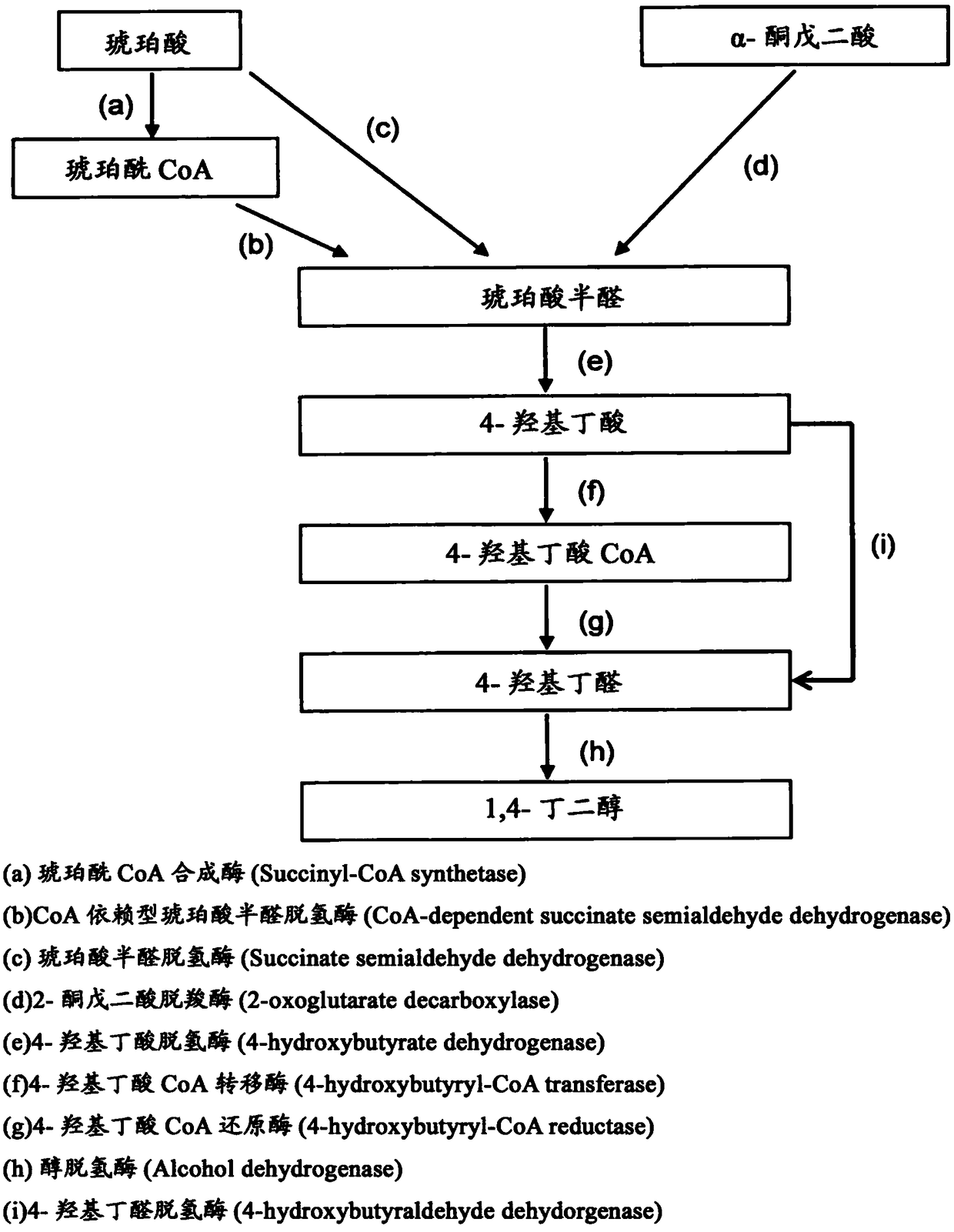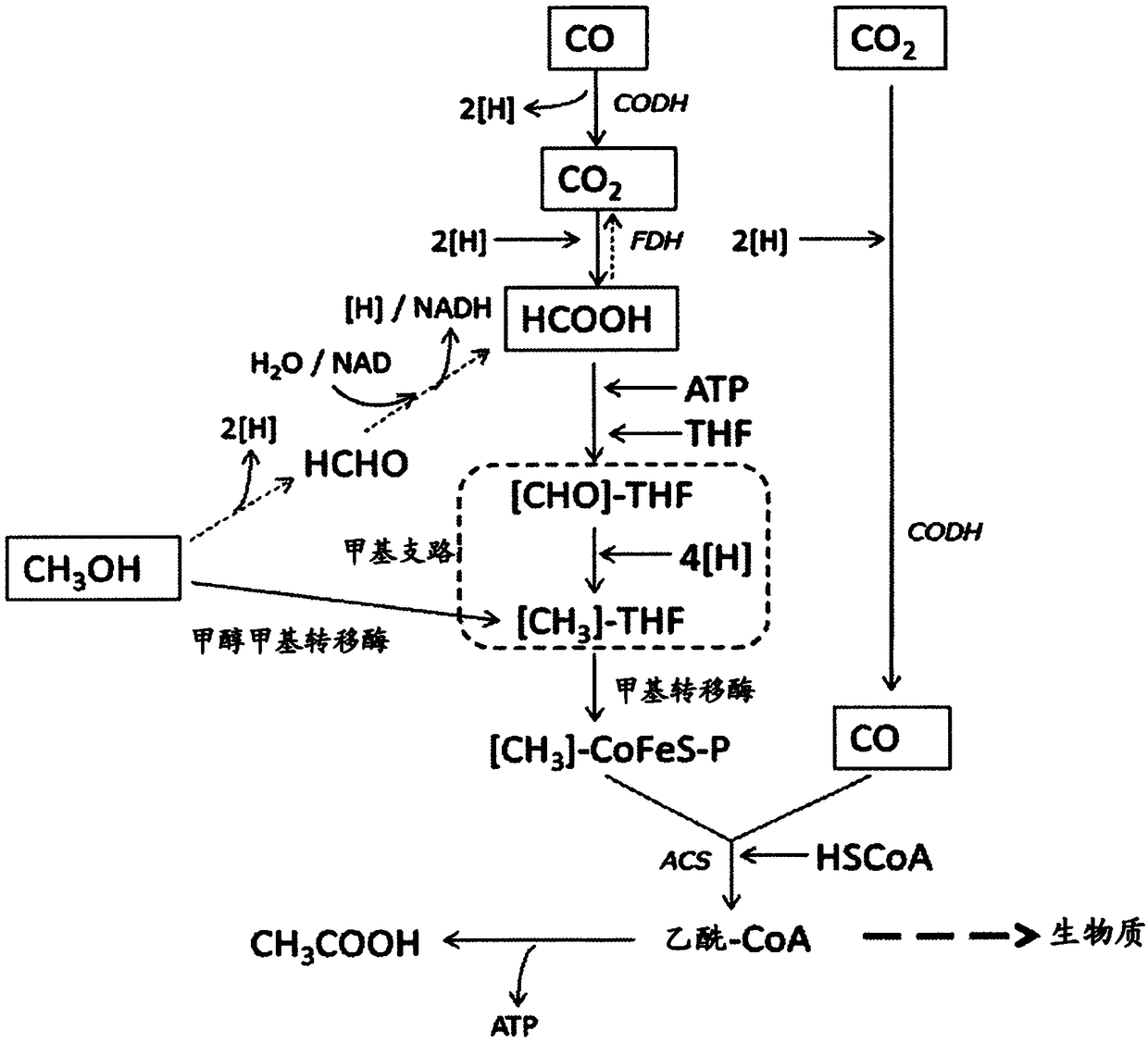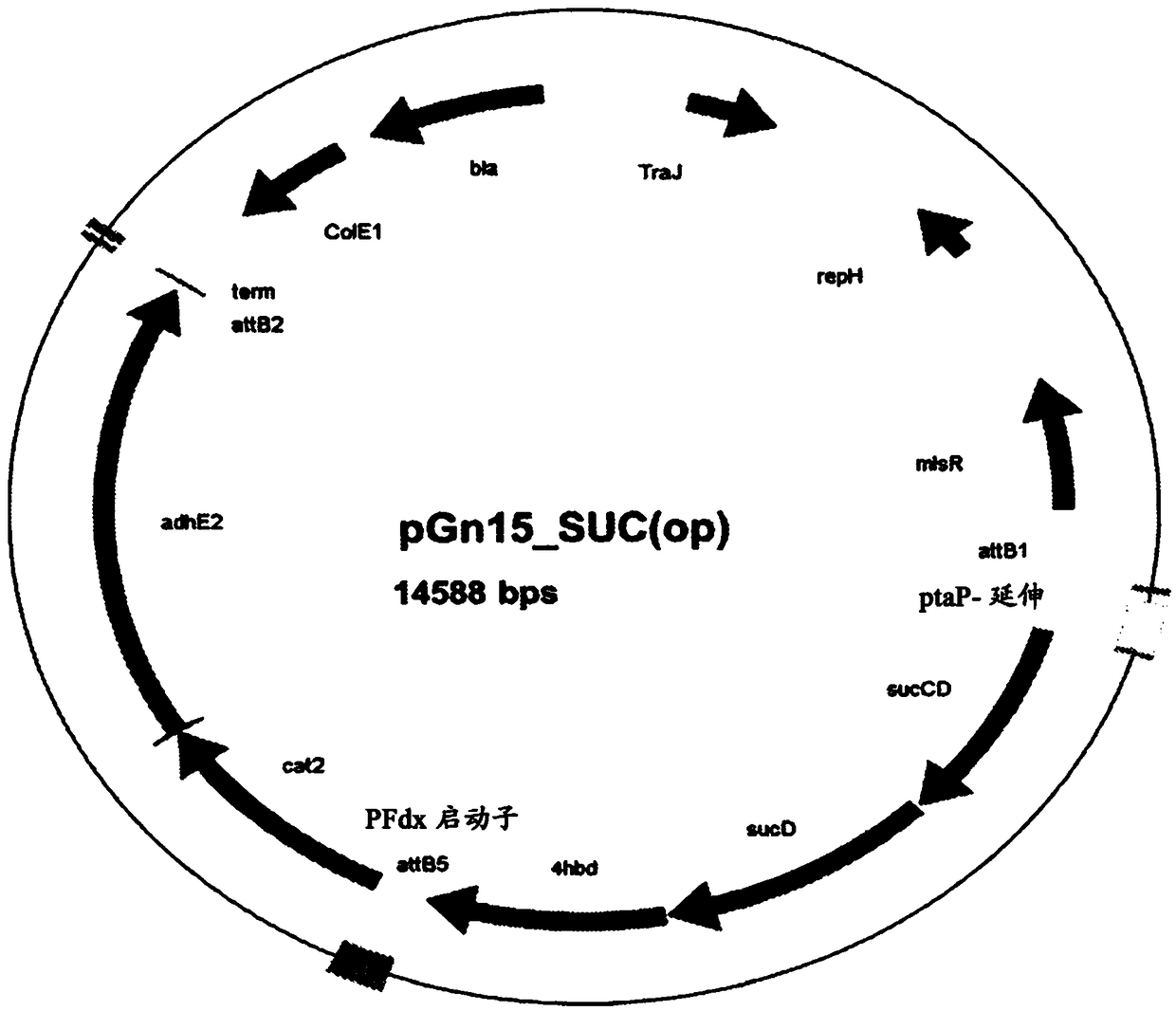Recombinant cells, method for producing recombinant cells, and method for producing 1,4-butanediol
A technology of recombinant cells and butanediol, applied in the field of recombinant cells, can solve the problems of unreported production
- Summary
- Abstract
- Description
- Claims
- Application Information
AI Technical Summary
Problems solved by technology
Method used
Image
Examples
Embodiment 1
[0189] Production of 1,4-butanediol (succinate pathway) by the synthetic gas-assimilating bacterium Clostridium listeri (C.ljungdahlii)
[0190] Clostridium / Escherichia coli (Clostridium / E.coli) shuttle vector pGn15_SUC (op) (sequence number 1, image 3 ) was introduced into Clostridium listeri (C.ljungdahlii) by electroporation method (BioRad Micropulser (BioRad, Hercules, CA, USA), 0.63kV). The obtained transformant was recovered from YTF agar medium (per 1 L, tryptone 16 g, yeast extract 10 g, sodium chloride 4 g, L-cysteine 2 mM, xylose 1%, agar 1.5%).
[0191]In the electroporation method, the following method is used. All operations except centrifugation and cryopreservation were carried out in a Whitley Anaerobic Workstation A55 (Don Whitley Scientific Limited, United Kingdom) under gas conditions of 10% CO 2 , 5%H 2 , 85%N 2 under obligate anaerobic conditions. A strain of Clostridium ljungdahlii (DSM No. 13528) was obtained from DSMZ (Deutsche Sammlung von Mikr...
Embodiment 2
[0208] Production of 1,4-butanediol from syngas using Clostridium ljungadhlii (alpha-ketoglutarate pathway)
[0209] Clostridium / Escherichia coli (Clostridium / E.coli) shuttle vector pGn15AKG (op) (sequence number 2, Figure 4 ) was introduced into Clostridium listeri (C.ljungdahlii) by electroporation method (BioRad Micropulser (BioRad, Hercules, CA, USA), 0.63kV). The obtained transformant was recovered from YTF agar medium (per 1 L, tryptone 16 g, yeast extract 10 g, sodium chloride 4 g, L-cysteine 2 mM, xylose 1%, agar 1.5%). The pGn15AKG(op) vector contains encoding α-ketoglutarate decarboxylase (sucA derived from Mycobacterium bovis), 4-hydroxybutyrate dehydrogenase (source 4hbd) from Porphyromonas gingivalis, 4-hydroxybutyrylCoA transferase (cat2 from Porphyromonas gingivalis), and difunctional 1,4-BDO synthesis gene cluster of bifunctional 4-hydroxybutyryl CoA reductase and alcohol dehydrogenase (adhE2 from Clostridium acetobutylicum) ( Figure 4 ). The resulting ...
Embodiment 3
[0215] Production of 1,4-butanediol by the cellulose-assimilating bacterium Clostridium cellulolyticum (succinate pathway)
[0216] Clostridium / Escherichia coli (Clostridium / E.coli) shuttle vector pM9_SUC (op) (sequence number 3, Figure 5 ) was introduced into Clostridium cellulolyticum (C.cellulolyticum) by electroporation method (1.6kV). By CM3 (1.3gL -1 (NH 4 ) 2 SO 4 , 1.5gL -1 KH 2 PO 4 , 2.9gL -1 K 2 HPO 4 ×3H 2 O, 0.2gL -1 MgCl 2 ×6H 2 O, 75.0mgL -1 CaCl 2 ×2H 2 O, 1.25mgL -1 FeSO 4 ×7H 2 O, 1.0 mL L -1 Trace element solution SL-10, 1.0mgL -1 Resazurin, 2.0gL -1 Yeast Extract, 2.5gL -1 Na 2 CO 3 , 0.5gL -1 L-cysteine-HCL×H 2 O, 6.0gL -1 D-cellobiose and 15.0gL -1 agar) agar plates to obtain transformants. The pM9_SUC(op) vector contains codes for succinyl CoA synthetase (sucCD from Escherichia coli), CoA-dependent succinate semialdehyde dehydrogenase (sucD from Clostridium kluyveri), 4hbd from Porphyromonas gingivalis, cat2 from Porphyrom...
PUM
 Login to View More
Login to View More Abstract
Description
Claims
Application Information
 Login to View More
Login to View More - R&D
- Intellectual Property
- Life Sciences
- Materials
- Tech Scout
- Unparalleled Data Quality
- Higher Quality Content
- 60% Fewer Hallucinations
Browse by: Latest US Patents, China's latest patents, Technical Efficacy Thesaurus, Application Domain, Technology Topic, Popular Technical Reports.
© 2025 PatSnap. All rights reserved.Legal|Privacy policy|Modern Slavery Act Transparency Statement|Sitemap|About US| Contact US: help@patsnap.com



